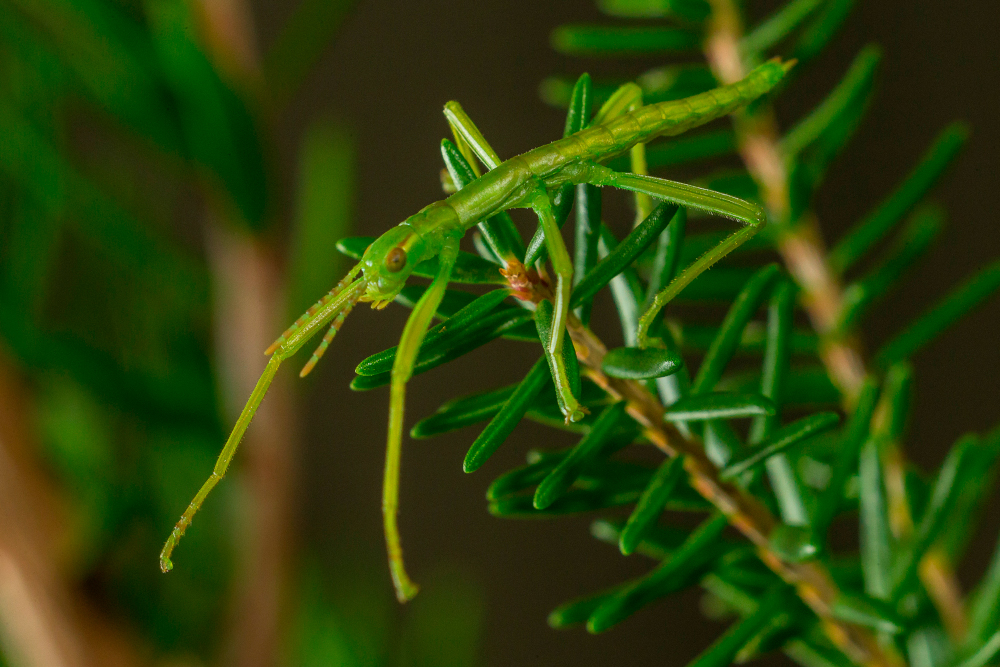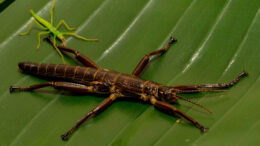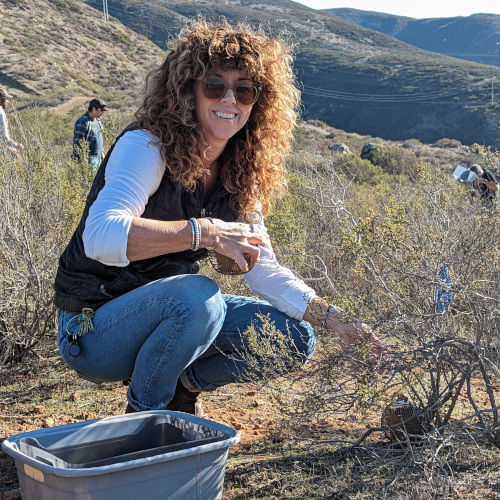Lord Howe Island, a UNESCO World Heritage site several miles off the coast of Australia, was once home to numerous endemic species found nowhere else on Earth. Among them were stick insects that had historically been so abundant fishermen used them as bait. When rats arrived with a grounded ship in 1918, sightings of these stick insects declined precipitously. By the early 1930s, they were presumed to be extinct.
But there were rumors that the big, black bug was present on Ball’s Pyramid, a tiny, sheer-faced volcanic sea stack about 12 miles (20 kilometers) from Lord Howe Island. In 2001 a team of scientists traveled to the pyramid to investigate. After a treacherous night climb, they were astonished to find a tiny population of the insects surviving on a scruffy melaleuca shrub, clinging to life on a 60-degree slope of the barren rock.
Upon the insect’s “rediscovery,” two pairs were brought to the Australian mainland for breeding — one to the Melbourne Zoo, which has successfully maintained this species in managed care and pioneered best practices for its recovery. Years later two other zoos — including the San Diego Zoo — are now also participating in recovering the rarest insect on the planet. These breeding populations will serve as insurance, in case something catastrophic occurs on their tiny island or to the group at the Melbourne Zoo.
Species name:
Lord Howe Island stick insect (Dryococelus australis)
Description:
The Lord Howe Island stick insect is a large, flightless, nocturnal insect that can measure up to 8 inches in length. It has a stout body — females have a broad abdomen that tapers to a conspicuous ovipositor, while males are slimmer, but with longer and thicker antennae and more robust hind legs with prominent spines. Juveniles, called nymphs, are bright green for the first few months of life and active during the day; as they mature, they begin to darken to greenish-brown and seek shelter during the day. Adults are a dark, glossy brown-black and are strictly herbivorous, foraging at night on host plants like melaleuca and fig.

Where it’s found:
Lord Howe Island stick insects are endemic to the Lord Howe Island Group, a cluster of volcanic islands in a crescent shape in the Tasman Sea, between Australia and New Zealand.
IUCN Red List status:
Lord Howe Island stick insects are listed as Critically Endangered on the International Union for Conservation of Nature Red List of Threatened Species. The native population exists only on Ball’s Pyramid, in extremely low numbers.
Major threats:
Lord Howe Island stick insects are threatened in their native habitat by the presence of invasive plants and non-native predators, including the rats that originally extirpated them from Lord Howe Island. Their tiny habitat on Ball’s Pyramid is subject to catastrophic weather events, and the fragility and low abundance of the existing host plants is of critical concern.
A highly infectious plant fungus called myrtle rust was detected on Lord Howe Island in February 2023, threatening the plant biodiversity there — in particular, an important group of Lord Howe Island stick insect host plants. It’s a grim reminder of the challenges all ecosystems face, and that the best-laid plans must be flexible in the face of uncertainty.
Notable conservation programs or legal protections:
The Lord Howe Island stick insect was listed as critically endangered in Australia under the Environment Protection and Biodiversity Act in 2002. The Melbourne Zoo has spearheaded a breeding program since 2003 and, along with the government of Australia, engaged additional partners for the global collaboration, which includes assurance populations, habitat restoration and rat eradication. The Lord Howe Island Board and residents have been key partners in the decades-long preparation to one day return this animal to its ancestral home on Lord Howe Island.
My favorite experience:
My most vivid memory has to be the very surreal experience of flying back to the San Diego Zoo in 2016 with 300 critically endangered Lord Howe Island stick insect eggs in my backpack. We had a bumpy start and a low hatch rate the first time we received eggs in 2012, and we spent the next four years building greater capacity to support them in North America. Many of the plant species preferences were different at our zoo, so we sent a horticulturist from our team to Australia to acquire seeds and cuttings of key host plants we couldn’t get here. When we finally felt confident that we had sufficient resources of the new plants and were ready to go pick up our eggs in Melbourne, a disease outbreak in the adult stick insects threatened that plan, and we had to pivot again.
I’ll never forget counting out the eggs with the Melbourne wildlife health and care teams, who surface-sterilized them pre-flight, so that they could come home with me with a lowered risk upon hatching. The idea that we were finally bringing this incredibly rare species back to San Diego to make their global population a little more secure made me hug that backpack closer. And yes, I did take them to the bathroom with me on the flight.
Do you live in or near a threatened habitat or community, or have you worked to study or protect endangered wildlife? Share your stories in our ongoing features, Protect This Place and Species Spotlight.
Previously in The Revelator:
Species Spotlight: The Barrens Topminnow — Doomed by Humans?


